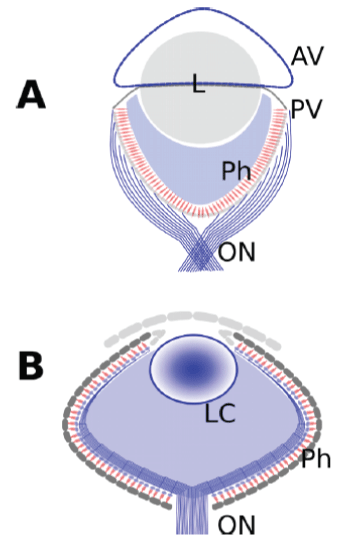
 |
| Figure 1: A) The two epithelial vesicles that give rise to the bicameral eye in some octopuses have been highlighted in this schematic drawing. The lens is formed with contributions from both vesicles and consequently lacks an enveloping capsule as happens in vertebrates. Senile cataract as result of confined epithelial in-growth is avoided “by design”. Simplified representation of the direct retina and absence of optic disc. B) In vertebrates – the inner epithelium of the lens is completely sequestered by the capsular basal membrane. This would eventually disrupt the ordered arrangement of crystalline fibers resulting in cataract. The inversion of the retina forces the axons to travel in the inner surface and to pierce the retina, giving rise to an optic disc exposed to intraocular events related with the circulation of aqueous. L Lens; AV Anterior vesicle; PV Posterior vesicle. Ph Photoreceptors; ON Optic nerve; LC Lens capsule |